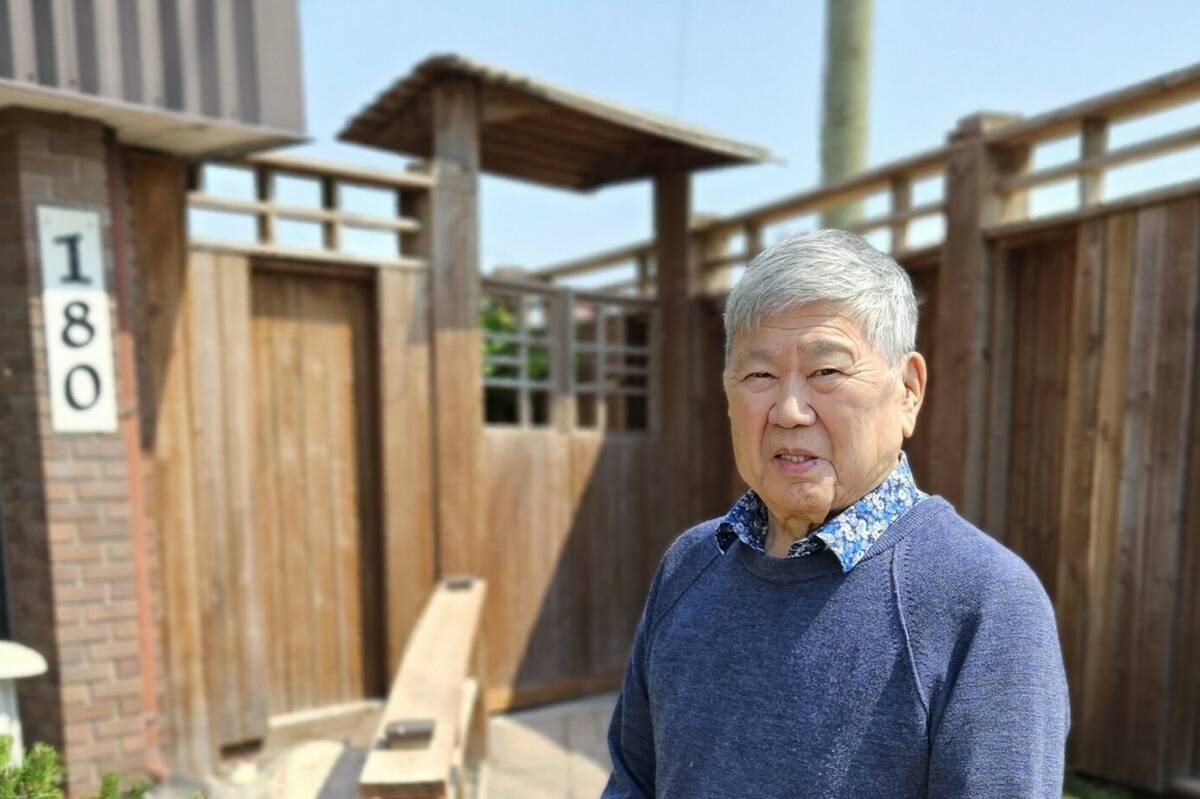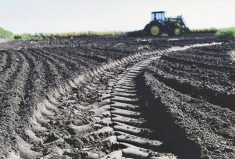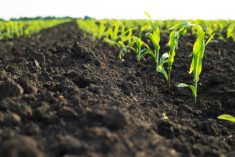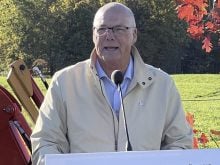There are many well-intentioned terms, such as sustainability and regenerative, that arise when talking about soil health and soil conservation. But turning words in action is hard to accomplish, given the drive to keep fields productive.
Many people say more must be done to stem soil damage. Some statistics support that view:
- In 2017, SGS Agri-food Laboratory in Guelph reported a drop of 2.5 per cent soil organic matter in Essex County, down from six per cent in 1949;
- Statistics Canada records from 1971 to 2011 indicate soil loss of 9.6 million acres from agricultural land;
- In 2021, a University of Massachusetts –Amherst study found the U.S. Corn Belt had lost a third of its carbon-rich topsoil – roughly 30 million acres – causing an estimated six per cent drop in corn and soybean yields and loss of nearly US$3 billion annually;
- In the mid-2010s, Jerry Hatfield, director of the United States Department of Agriculture, noted the area of eroded hilltops in Iowa had tripled in 30 years.
There is also a drive to push yields and feed a growing global population while addressing climate change. Organic production and regenerative farming have been presented as viable solutions but advocates say the industry must be proactive in protecting that six- to eight-inch soil profile, perhaps by following new routes.
But what does that look like?
Read Also

The forced Japanese-Canadian farmers of the Second World War
Manitoba’s sugar beet farms drew on displaced Japanese-Canadians from B.C. during the Second World War
As a farmer in Huron County during the 1980s, Don Lobb was one of the earliest and most successful no-till farmers in Ontario. He conducted on-farm trials with researchers for 35 years. A founder of the Innovative Farmers Association of Ontario, he has written about protecting soil health and was a founding member of the Soil Conservation Council of Canada. He has consulted with soil scientists and researchers and continues to make presentations to various groups, including the Senate Standing Committee on agriculture.
According to Lobb, agriculture should no longer attend to soil health concerns on its own. It needs societal support.
Sustainability has a profile among many people outside of farming who encourage soil care initiatives and protection of valuable land, but have no accountability for those goals.
Lobb believes society has a responsibility to inform itself. Philosophy, perceptions and parochial agendas aren’t good enough.
Among his recommendations is the assignment of soil care and protection to a government entity, separate from agriculture production pressure, because food land productivity determines food price. That impacts standard of living, which underpins social and political security.
Everyone is a stakeholder in soil health, says Lobb, noting he’s in favour of an incentive tax on land classified as agricultural, to be administered by the Property Tax Assessment Office, with audits of land management activity.
It would be revenue-neutral so that well-managed land is taxed less and degraded land is taxed more. It would be an incentive to farm better.
Lobb has worked for 40 years to incentivize better soil management but it always comes back to a graduated farmland property tax rebate system. He believes society would receive value for the rebates, while the best land managers would have financial advantage.
For the past 20 years, Lobb has watched the amount of tillage increase, while soil tests show a steady, 70-year decline in soil organic matter. It’s a trend he says cannot continue.
Show them a better way
Keith Reid agrees with Lobb’s assessment and distills it: “How do we instill a soil conservation ethic into every farmer in Canada?”
“It has a huge number of facets,” says Reid, a retired soil scientist with Agriculture and Agri-Food Canada and the Ontario Ministry of Agriculture, Food and Rural Affairs.
“Some are technical, some behavioural, some societal, some financial and some governmental. The signals often point in different directions, and we will only make progress if we get enough signals pointing in the same direction.”
Reid notes farmers resist doing things that don’t make sense, and every farm is unique. The best conservation practice for one might challenge another.
“There’s no one providing guidance that’s specific to a particular farm,” says Reid. “Current extension advice falls into two classes: ‘Here’s the list of options –you figure it out.’ That leads to paralysis. Or ‘do these three things and you’ll be golden’, which is wrong for about 80 per cent of farms.”
Still, he believes consumers will pay extra for some foods, despite flimsy understanding of farming systems. So far, market signals are based on consumers avoiding what they have been told to fear, without improving sustainability.
Government programs that herald perceived value versus actual outcomes, where program evaluators favour paying for “things” rather than “behaviours” are impediments, says Reid. Money for programs is tangible, but whether it was needed to solve a problem is almost irrelevant.
And while he doesn’t advocate for an incentive tax, he says there is potential for government support.
“A strong commitment from multiple levels of government to support soil conservation would be a good start, since farmers will respond to what they see as important to society,” says Reid.
“This needs to be backed up with tangible supports for research, extension and cost-share. Recognition at the consumer level that they value soil conservation would go a long way, as well.”















